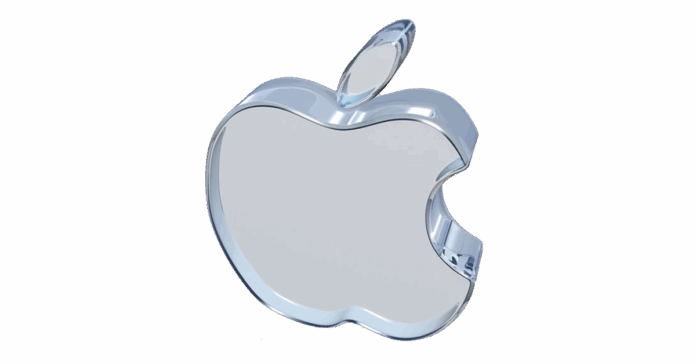CUPERTINO, CA – Apple Inc. (AAPL) delivered its fiscal third-quarter 2025 earnings report today, showcasing record revenue and highlighting significant momentum in its key product and services segments. The results, however, present a complex picture for investors. While the company’s financial health remains robust, and its strategic pivot toward artificial intelligence promises a new growth cycle, a detailed valuation analysis suggests that the stock is currently a Hold. This recommendation stems from a nuanced look at the company’s intrinsic value, which, when calculated using multiple methods, falls short of justifying a strong “Buy” signal at its current trading price. The data points toward a well-run, highly profitable enterprise, but one whose stock price may have already factored in a significant portion of its future success.
The release of these results has put the spotlight back on Apple’s enduring strengths and its new initiatives. The tech giant posted quarterly revenue of $94 billion, marking a solid 10% increase year-over-year. This performance was largely driven by double-digit growth in its core iPhone, Mac, and high-margin Services segments, exceeding analyst expectations and demonstrating the company’s ability to navigate a challenging global economic landscape. Net income for the quarter was reported at $23.4 billion, translating to a diluted earnings per share (EPS) of $1.57, a 12% rise from the same period last year.
The Financial Fortress: Profitability and Operational Efficiency
A closer look at Apple’s financial statements reveals a company that is not only growing but also exceptionally profitable. Over the trailing twelve months (TTM), Apple’s revenue has climbed to an impressive $400.4 billion, with a net income of $99.3 billion. The company’s operational efficiency is highlighted by a TTM operating margin of 31.8% and a net profit margin of 24.8%. These figures underscore Apple’s pricing power and its ability to maintain high profitability even as it scales its operations globally.
Profitability metrics paint a similarly strong picture. The TTM Return on Equity (ROE) stands at a staggering 148.6%, with a 3-year average of 172.6%. This indicates that Apple is generating substantial profits relative to the amount of shareholder capital invested. This is further complemented by a TTM Return on Invested Capital (ROIC) of 64.5%, showcasing the company’s effectiveness in using both debt and equity to generate returns. The Return on Tangible Assets (ROTA) is also strong at 30.0%, reflecting the business’s low capital intensity and its ability to generate high returns from its physical assets.
However, one of the most revealing and often-overlooked metrics is the Debt-Adjusted ROE (DAROE). For the TTM period, Apple’s DAROE is 60.2%, with a 3-year average of 57.3%. This metric is crucial because it adjusts traditional ROE by a company’s debt structure, providing a clearer view of earnings quality by penalizing businesses that use high leverage to inflate their returns. Apple’s high DAROE suggests that its impressive profitability is not just a result of a leveraged balance sheet but is instead driven by genuinely strong business performance and effective capital management. This is a significant point for investors, as it indicates a more sustainable and less risky return profile.
Growth and Cash Flow: A Tale of Two Timelines
While Apple’s profitability is undeniable, its recent growth story is more complex. The company’s Revenue Growth Rate has been strong over the long term, with a 5-year compound annual growth rate (CAGR) of 9.2%. However, the 3-year CAGR shows a slight decline of -0.4%, reflecting a period of post-pandemic normalization and macroeconomic challenges that have slowed the broader consumer electronics market. Similarly, the Earnings Growth Rate has a 5-year CAGR of 13% but a 3-year CAGR of -3%, a trend that requires careful monitoring.
Despite these recent growth fluctuations, Apple’s cash generation remains a key strength. The company’s TTM Free Cash Flow (FCF) is a robust $106.2 billion, providing a Free Cash Flow Yield of 3.3%. This massive cash flow is a testament to the company’s efficient business model, which requires low capital reinvestment for growth. Its Capital Expenditures (CapEx) as a percentage of FCF is just 11.7%, a figure that highlights Apple’s strategy of outsourcing manufacturing to partners like Foxconn. This model minimizes the need for heavy investments in physical assets, allowing a significant portion of its FCF to be returned to shareholders through dividends and share buybacks.
The company’s commitment to returning capital to shareholders is clear. Over the past five years, Apple has reduced its outstanding shares by 12%, a powerful indicator of management’s confidence in the company’s value and its dedication to enhancing per-share metrics. The dividend payout ratio is a conservative 15.4%, leaving ample room for both reinvestment in the business and future dividend increases.
A Look Under the Hood: The “Moat” and Competitive Landscape
Apple’s financial strength is underpinned by a powerful and durable competitive advantage—or “moat.” This moat is not a single factor but a combination of several strengths:
- Brand Loyalty: Apple’s premium brand identity commands exceptional customer loyalty and allows it to maintain high margins. The brand’s reputation for quality, design, and user experience creates a powerful psychological barrier for customers to switch to competitors.
- Ecosystem Integration: The seamless integration of hardware (iPhone, Mac, Apple Watch), software (iOS, macOS), and services (App Store, Apple Music) creates high switching costs. Once a user is invested in the Apple ecosystem, moving to a competitor becomes a significant and often inconvenient process.
- Network Effects: The vast installed base of over 2 billion active devices worldwide creates powerful network effects. The presence of so many users makes the App Store an essential platform for developers, which in turn attracts more users, creating a virtuous cycle.
- Cost Advantage: Through economies of scale in its global supply chain, Apple secures favorable pricing from its suppliers, giving it a significant cost advantage over smaller competitors.
- Intangible Assets: Apple holds a massive portfolio of patents and proprietary software, including its in-house designed A-series and M-series chips, which are key to its performance advantage and protect its innovations.
Despite this robust moat, the company operates in a highly concentrated and competitive industry. Key rivals include:
- Samsung: A formidable competitor known for its wide variety of hardware and aggressive pricing, though it lacks the integrated ecosystem and premium brand loyalty of Apple.
- Google: Dominant in AI and software services with its Android ecosystem, but with a weaker presence in high-end hardware.
- Microsoft: A powerful player in the enterprise space and software, with a limited consumer device appeal compared to Apple.
- Amazon: Strong in cloud services and e-commerce, with a growing smart home presence, but without the deep integration and premium brand cachet of Apple’s devices.
Valuation: A Case for Caution
The ultimate question for investors is whether Apple’s stock price reflects its underlying value. Using two distinct valuation methodologies, the analysis provides a nuanced answer.
The first, a Buffett-Inspired Valuation Method, is highly conservative. It assumes a constant 3% FCF growth rate over the next decade, a perpetual growth rate of 2.5%, and an 8% discount rate. Based on these assumptions, the intrinsic value per share is calculated at $133.22. With the last closing price at $207.57, this model suggests the stock is significantly overvalued. Applying a 40% margin of safety, the target price drops to $79.93, leading to a “Consider Selling” recommendation.
The second approach, the McGrew Growth Valuation Method, takes a more dynamic view. It assumes an initial FCF growth rate of 10.3% (based on the 5-year FCF CAGR), which then declines linearly to 6% by Year 10, before settling into the same perpetual growth rate and discount rate. This more optimistic model produces an intrinsic value of $204.06 per share. While this is much closer to the current market price, it still does not provide the margin of safety typically sought by value investors. With a 40% margin of safety, the target price is $122.44. Based on this more generous valuation, the stock falls into a Hold category, as its intrinsic value is between 80% and 125% of the last closing price.
Both valuation methods, while different in their assumptions, ultimately arrive at the same conclusion: Apple’s stock, at its current price, does not offer a significant margin of safety for new investments. The stock is a Hold, meaning that current shareholders should likely not sell, but new investors should be cautious about buying at these levels. The current price already seems to incorporate much of the company’s future growth potential, including the promised AI innovations.
Looking Ahead: The AI-Driven Future
During the earnings call, CEO Tim Cook and CFO Kevan Parekh emphasized the company’s optimism for the future, particularly with the recent unveiling of Apple Intelligence. The integration of these new AI features across iOS, macOS, and other platforms is expected to create a powerful new upgrade cycle for hardware and a more engaging ecosystem for users. The company’s ability to successfully monetize these new features will be a key driver of future growth.
Apple’s strong cash position, with $36.3 billion in cash and equivalents on the balance sheet, gives it the flexibility to continue its share buyback program and invest in strategic areas like AI development and supply chain diversification into regions like India and Vietnam. The company is well-positioned to navigate future challenges, from geopolitical tensions to technological shifts.
In conclusion, Apple’s Q3 2025 earnings report is a testament to its enduring operational excellence and financial strength. The company’s profitability, massive cash generation, and powerful competitive moat are undeniable. However, the stock’s current valuation, as highlighted by a detailed analysis, suggests that much of this good news is already priced in. For existing shareholders, it’s a reason to remain confident in their investment. For prospective buyers, the wise course of action is to Hold and await a more attractive entry point. The future is bright with the promise of Apple Intelligence, but the present valuation demands prudence.
Key Metrics Summary
| Metric Name | Value | Timeframe |
| Debt-Adjusted ROE (DAROE) | 60.2% | TTM |
| Debt-Adjusted ROE (DAROE) | 57.3% | 3 Year Avg |
| ROE | 148.6% | TTM |
| ROE | 172.6% | 3 Year Avg |
| ROIC | 64.5% | TTM |
| Gross Profit Margin | 46.6% | TTM |
| Net Profit Margin | 24.8% | TTM |
| Free Cash Flow Yield | 3.3% | TTM |
| Earnings Growth Rate | 13% | 5 Year CAGR |
| Revenue Growth Rate | 9.2% | 5 Year CAGR |
| Share Buyback/Dilution Trends | 12% reduction | 5 Year |
| Capital Expenditures (CapEx) as % of FCF | 11.7% | TTM |

